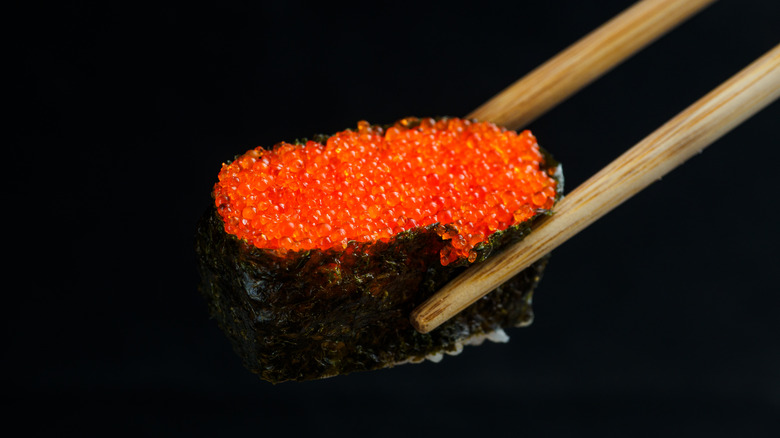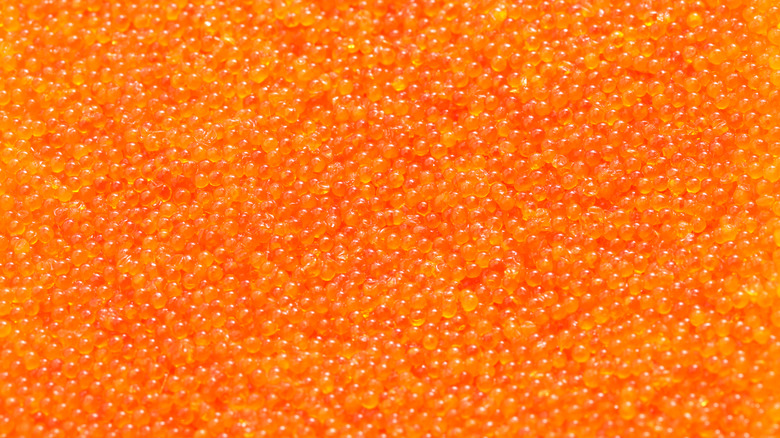The Unique Flavor Profile Of Tobiko Explained
Almost everyone has heard of caviar but it is just one of many different types of fish roe. From shrimp roe to salmon eggs, the world of fish roe is a flavorful deep dive well worth exploring. One of the easiest ways to find fish roe is by visiting sushi restaurants, where these fish eggs come in all shapes, sizes, and even colors.
One of the most common types of fish roe at sushi restaurants is tobiko. Also known as flying fish roe, tobiko is a small, orange roe often used as a topping or garnish in Japanese cuisine, specifically on raw fish dishes. It is savory and salty in flavor with a small hint of sweetness; it has also been described as tasting similar to seaweed.
Although tobiko typically comes in an orange color, this roe can actually be found in several colors, each with their own unique flavor. These colors range from red to black; sometimes, tobiko can even be found in a golden color! However, the orange color with an oceanic, salty flavor is considered the most common and classic form of tobiko.
The taste of tobiko
Overall, tobiko is salty, savory, and smoky in flavor. It has a slight sweetness but not enough to overpower the saltiness of it. Tobiko is slightly sweeter than caviar and ikura, also known as salmon roe.
Tobiko's uniquely smoky flavor comes from the way the fish roe is processed. Tobiko is salt-cured, which is what helps it pack such a flavorful punch despite being one of the smaller fish roe out there. This smokiness is still present in the tobiko variations, which is what sets it apart.
When it comes to variations, the color directly indicates what flavor the tobiko will be. For example, green tobiko is infused with wasabi, making it spicier. Black tobiko uses squid ink, giving it a noticeable umami flavor. Other variations include yellow tobiko, which is made with the help of citrus, or red tobiko, which is a little bit sweeter due to the use of beets.

